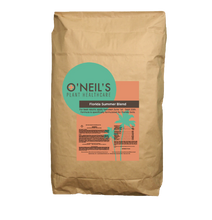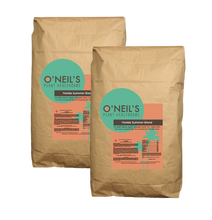HOW MUCH DO YOU NEED?
Use this tool to find out how much to order
Use the simple diagram below to see how much fertilizer you’ll need for your tree. Simply select your tree type below. Then hover over the tree icons to get an idea of tree size and recommended fertilizer quantity.
Small Tree
Medium Tree
Large Tree
For more exact calculations, use our Fertilizer Calculator
O’Neil’s Promise
The perfect ratio of all the nutrients your Florida trees need to stay happy in our unique climate
6-month slow-release polymer-coating on all macronutrients and micronutrients designed to sustain Florida’s heavy rainfall
Absolutely NO fillers ever

Learn More
Frequently Asked Questions
Palm trees need a proper balance of macro- and micronutrients in order to stay green and thrive. They may turn yellow when they’re deficient in essential nutrients such as nitrogen, manganese, magnesium — and especially in Florida — potassium. Pick up a nutrient-rich fertilizer, such as O’Neil’s Plant Health Care 3-Season Blend or Summer Blend for Florida palms, to restore the proper balance of nutrients to your trees.
Established palm trees need to be watered 1 to 3 times a week depending on the season and species of your palm tree. Palm trees need more water during warmer months and less during cold months. During the winter, watering once a week should be sufficient. The soil should always feel damp, not wet. Adjust the water amount accordingly.
Newly transplanted palms have a tendency to lose moisture, so if you’ve newly planted your palm tree (in which case, congrats, new palm parent!), water it more often for the first two weeks — every day for the first week and every other day for the second week — until they’ve developed new roots. And water it deeply to make sure moisture is reaching the roots.
Water your palms early in the morning or late in the evening when temperatures aren’t too high, especially during the summer. This helps avoid frying the leaves of your palms.








